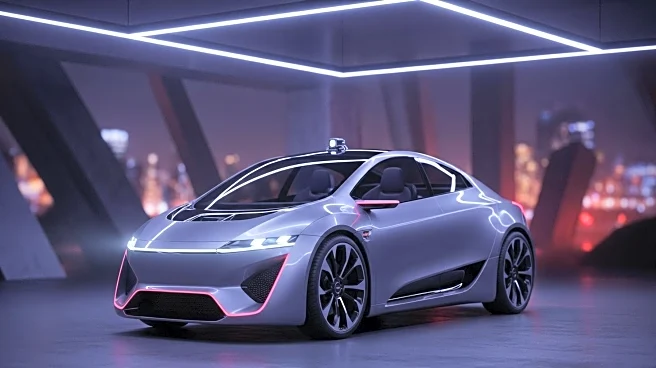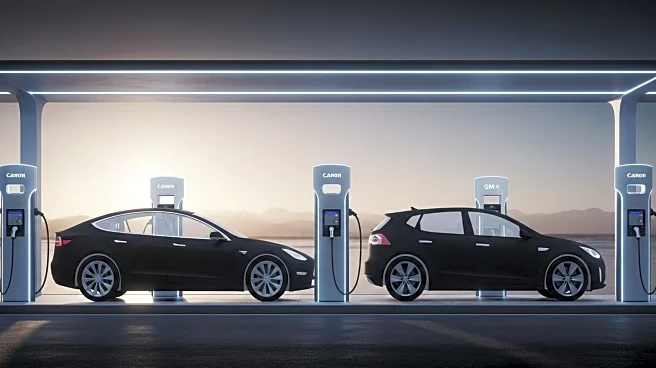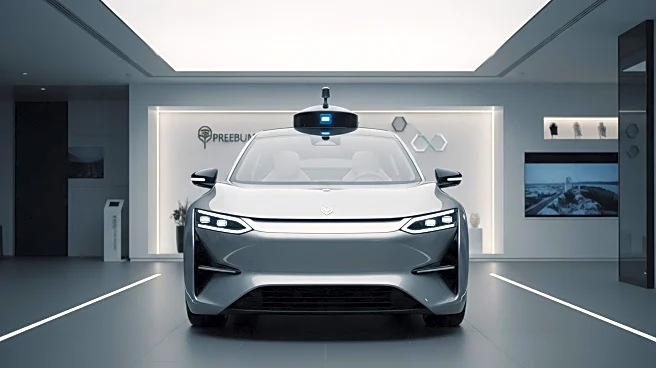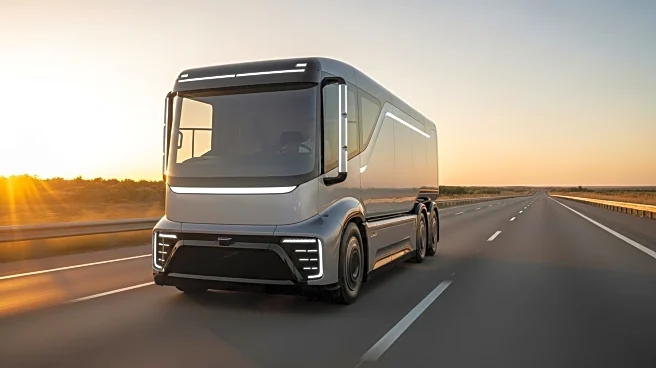What is the story about?
What's Happening?
The development of autonomous vehicles is advancing rapidly, with significant investments from major companies like Tesla and Waymo. These companies are at the forefront of integrating advanced technologies such as AI, radar, and LiDar to enhance the safety and efficiency of self-driving cars. Despite these advancements, the transition to fully autonomous vehicles faces several challenges, including regulatory hurdles, technical issues, and public acceptance. The regulatory environment is complex, with varying approaches across different countries, and the U.S. is working on establishing clear guidelines to balance innovation with safety. Additionally, technical challenges such as sensor accuracy in adverse weather conditions and the unpredictability of human behavior on the road remain significant obstacles.
Why It's Important?
The shift towards autonomous vehicles has the potential to revolutionize transportation in the U.S., offering benefits such as reduced traffic congestion and improved road safety. However, the transition also poses challenges, including potential job losses in driving professions and the need for infrastructure upgrades. The regulatory landscape will play a crucial role in shaping the future of autonomous vehicles, as it must address safety concerns while fostering innovation. The successful integration of self-driving cars could lead to significant economic and societal changes, impacting urban planning, environmental sustainability, and mobility for various demographics, including the elderly and disabled.
What's Next?
As the technology for autonomous vehicles continues to develop, stakeholders will need to address the existing challenges to facilitate their widespread adoption. This includes improving sensor technologies to handle diverse weather conditions and developing advanced algorithms for better human behavior prediction. Regulatory bodies will need to establish comprehensive guidelines that ensure safety while promoting technological advancement. Public acceptance will also be crucial, requiring efforts to build trust in the safety and reliability of self-driving cars. The timeline for widespread adoption remains uncertain, but gradual integration is expected, with predictions indicating a significant presence of autonomous vehicles by 2030.
Beyond the Headlines
The rise of autonomous vehicles could lead to profound changes in American society. Urban planning may need to adapt to accommodate driverless cars, potentially reducing the need for parking spaces and altering city landscapes. The environmental impact of autonomous vehicles is also a consideration, with potential reductions in emissions and energy use. However, the production of batteries for electric autonomous vehicles raises concerns about resource sustainability. As the industry evolves, it will be essential to address these broader implications to maximize the benefits of autonomous technology while mitigating its drawbacks.
AI Generated Content
Do you find this article useful?













